#graphql db
Explore tagged Tumblr posts
Video
youtube
Spring Boot GraphQL Mongo DB Project Tutorial with Example for API Devel... Full Video Link https://youtu.be/JElcKeh9a5A Hello friends, new #video on #springboot #graphql #mongodb #api #microservices #application #tutorial for #developer #programmers with #examples are published on #codeonedigest #youtube channel. @java #java #aws #awscloud @awscloud @AWSCloudIndia #salesforce #Cloud #CloudComputing @YouTube #youtube #azure #msazure #codeonedigest @codeonedigest #graphqlspringboot #graphqlspringboottutorial #graphqlspringbootmicroservicesexample #graphqlspringbootexample #graphqlmongodbexample #graphqlmongodbspringboot #springbootmongodb #springbootgraphql #springbootgraphqltutorial #springbootgraphqlexample #springbootgraphqlresolver #springbootgraphqlschema #springbootgraphqlschemamapping #springbootgraphqlmongodb #mongodbtutorialforbeginners #springboottutorial #springbootproject #graphql
#youtube#graphql tutorial#springboot graphql api#spring boot graphql microservices#springboot graphql api mongo db#spring boot mongodb#graphql api mongo db#spring boot graphql api mongodb#mongo db tutorial
1 note
·
View note
Text
Unraveling the 5 Layers of Software Development
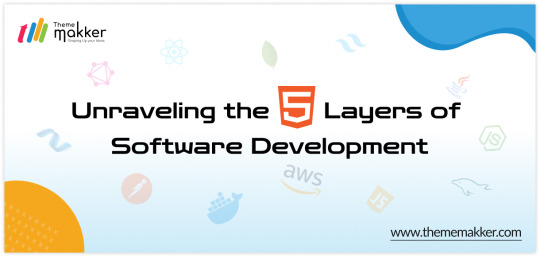
In the realm of software development services, every application is built upon a foundation of interconnected layers, each serving a specific purpose in delivering functionality to end-users. Understanding these layers and the technologies that power them is crucial for developers aiming to create robust and efficient software solutions. In this blog, we'll explore the five key layers of software architecture: User Interface (UI), Application Programming Interface (API), Database (DB), Business Logic, and Hosting, along with examples of technologies commonly used in each layer.
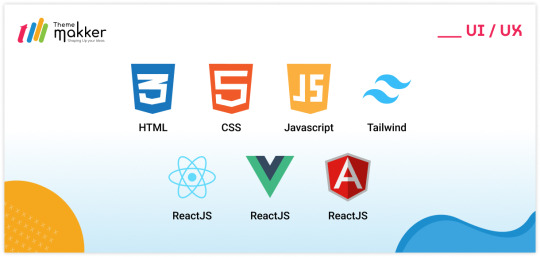
User Interface (UI): The UI layer is what users interact with directly. It encompasses everything from the visual design to the user experience (UX). Technologies used in this layer focus on creating intuitive, responsive, and aesthetically pleasing interfaces. Some popular UI Design technologies include:
HTML/CSS/JavaScript: These front-end technologies form the backbone of web-based UIs. HTML defines the structure, CSS styles the elements, and JavaScript adds interactivity.
React.js/Vue.js/Angular: These JavaScript frameworks are used to build dynamic and interactive user interfaces for web applications.
Swift/Kotlin: For mobile application development, languages like Swift (for iOS) and Kotlin (for Android) are used to develop native user interfaces.
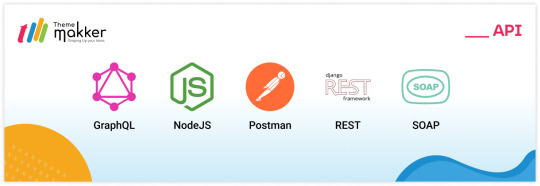
Application Programming Interface (API): The API layer acts as an intermediary between the UI and the business logic, enabling communication and data exchange. APIs define the endpoints and protocols through which different software components interact. Common technologies used in API development services include:
RESTful APIs: Representational State Transfer (REST) is a popular architectural style for designing networked applications. RESTful APIs use HTTP methods like GET, POST, PUT, and DELETE to perform operations on resources.
GraphQL: An alternative to REST, GraphQL provides a more flexible and efficient approach to querying and manipulating data. It allows clients to request only the data they need, reducing over-fetching and under-fetching.
Express.js/Django/Rails: Frameworks like Express.js (for Node.js), Django (for Python), and Rails (for Ruby) are commonly used to build web APIs quickly and efficiently.
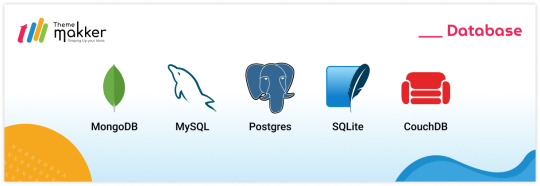
Database (DB): The database layer is responsible for storing, retrieving, and managing data. It provides a persistent storage solution for an application's information. Various types of databases exist, including relational databases, NoSQL databases, and in-memory databases. Some popular database technologies include:
MySQL/PostgreSQL: Relational database management systems (RDBMS) like MySQL and PostgreSQL are widely used for structured data storage and management.
MongoDB: A popular NoSQL database, MongoDB is designed for storing unstructured or semi-structured data in JSON-like documents.
Redis: An in-memory data structure store, Redis is often used as a caching layer or for real-time data processing.
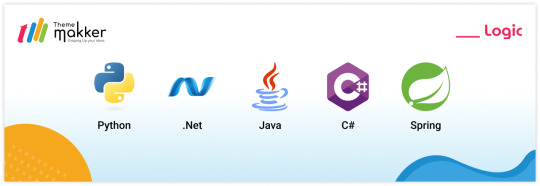
Business Logic: The business logic layer contains the application's core functionality and rules. It processes requests from the UI, interacts with the database, and performs the necessary operations to fulfill user actions. While business logic can be implemented in various programming languages, some technologies commonly used for this layer include:
Java/C#: Object-oriented languages like Java and C# are often chosen for building robust and scalable business logic components.
Node.js/Python: JavaScript (with Node.js) and Python are also popular choices, especially for applications requiring agility and rapid development.
Spring/.NET Core: Frameworks like Spring (for Java) and .NET Core (for C#) provide tools and libraries for building enterprise-grade business logic components.
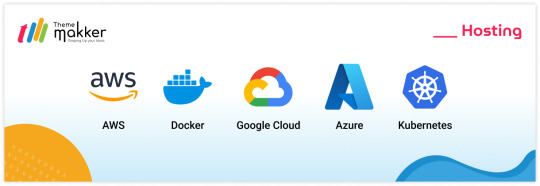
Hosting: The hosting layer encompasses the infrastructure and environment where the application runs. It includes servers, cloud platforms, containers, and other deployment options. Popular hosting technologies and platforms include:
Amazon Web Services (AWS)/Microsoft Azure/Google Cloud Platform (GCP): These cloud service providers offer a range of hosting solutions, including virtual machines, containers, and serverless computing.
Docker/Kubernetes: Containerization technologies like Docker and orchestration platforms like Kubernetes provide efficient ways to package, deploy, and manage applications across different environments.
Heroku/Netlify/Vercel: These platforms offer simplified hosting solutions specifically tailored for web applications, providing features like continuous deployment, scalability, and managed infrastructure.
In conclusion, navigating the various layers of software architecture requires a comprehensive understanding of each layer's purpose and the technologies that power them. By leveraging the right technologies for UI, API, DB, logic, and hosting, developers can build robust, scalable, and maintainable software solutions that meet the needs of modern users and businesses.
#webdesign#mobileappdevelopment#appdevelopment#web developers#webdevelopment#youtube#apiintegration#thememakker#webdevelopmentcompany#hosting#database#serverless computing#api#uiuxdesign#ui#ux#aws#ror#docker#java#kubernetes#hire developers#webservices
0 notes
Text
hello computer can you please process jason rest requests. i would like to create and store things. please assign these things a unique numeric id and allow them an info field which is a tiny bit of text. please it's so simple. one table in an sqlite db
graphql:

oh god it looks like i have to figure graphql out
32 notes
·
View notes
Video
GraphQL Server in 4 Phases With Express & Typescript - JWT Auth Series Pt 1.
This video is a GraphQL server tutorial which covers GraphQL mutations, gives a GraphQLSchema example, and sets up a GraphQL Postgres db. We will be coding everything in Typescript and using Express/NodeJS for the build. Whether you're learning GraphQL for the first time or a seasoned coder, there are several nuggets of knowledge that you can get from this video.
#graphql server#graphql tutorial#graphql mutations#graphql typescript#express graphql#github graphql#graphql example#graphql js#graphql nodejs#npm graphql#nodejs graphql#howtographql#graphql npm#graphql postgres#graphql node#facebook graphql#postgres graphql#learning graphql#graphqlschema example#graphql db#graphqlerror#graphqlconfig#graphql postman#postman graphql#stack that code#graphql#graphql server tutorial#create a graphql server
1 note
·
View note
Photo

hydralisk98′s web projects tracker:
Core principles=
Fail faster
‘Learn, Tweak, Make’ loop
This is meant to be a quick reference for tracking progress made over my various projects, organized by their “ultimate target” goal:
(START)
(Website)=
Install Firefox
Install Chrome
Install Microsoft newest browser
Install Lynx
Learn about contemporary web browsers
Install a very basic text editor
Install Notepad++
Install Nano
Install Powershell
Install Bash
Install Git
Learn HTML
Elements and attributes
Commenting (single line comment, multi-line comment)
Head (title, meta, charset, language, link, style, description, keywords, author, viewport, script, base, url-encode, )
Hyperlinks (local, external, link titles, relative filepaths, absolute filepaths)
Headings (h1-h6, horizontal rules)
Paragraphs (pre, line breaks)
Text formatting (bold, italic, deleted, inserted, subscript, superscript, marked)
Quotations (quote, blockquote, abbreviations, address, cite, bidirectional override)
Entities & symbols (&entity_name, &entity_number,  , useful HTML character entities, diacritical marks, mathematical symbols, greek letters, currency symbols, )
Id (bookmarks)
Classes (select elements, multiple classes, different tags can share same class, )
Blocks & Inlines (div, span)
Computercode (kbd, samp, code, var)
Lists (ordered, unordered, description lists, control list counting, nesting)
Tables (colspan, rowspan, caption, colgroup, thead, tbody, tfoot, th)
Images (src, alt, width, height, animated, link, map, area, usenmap, , picture, picture for format support)
old fashioned audio
old fashioned video
Iframes (URL src, name, target)
Forms (input types, action, method, GET, POST, name, fieldset, accept-charset, autocomplete, enctype, novalidate, target, form elements, input attributes)
URL encode (scheme, prefix, domain, port, path, filename, ascii-encodings)
Learn about oldest web browsers onwards
Learn early HTML versions (doctypes & permitted elements for each version)
Make a 90s-like web page compatible with as much early web formats as possible, earliest web browsers’ compatibility is best here
Learn how to teach HTML5 features to most if not all older browsers
Install Adobe XD
Register a account at Figma
Learn Adobe XD basics
Learn Figma basics
Install Microsoft’s VS Code
Install my Microsoft’s VS Code favorite extensions
Learn HTML5
Semantic elements
Layouts
Graphics (SVG, canvas)
Track
Audio
Video
Embed
APIs (geolocation, drag and drop, local storage, application cache, web workers, server-sent events, )
HTMLShiv for teaching older browsers HTML5
HTML5 style guide and coding conventions (doctype, clean tidy well-formed code, lower case element names, close all html elements, close empty html elements, quote attribute values, image attributes, space and equal signs, avoid long code lines, blank lines, indentation, keep html, keep head, keep body, meta data, viewport, comments, stylesheets, loading JS into html, accessing HTML elements with JS, use lowercase file names, file extensions, index/default)
Learn CSS
Selections
Colors
Fonts
Positioning
Box model
Grid
Flexbox
Custom properties
Transitions
Animate
Make a simple modern static site
Learn responsive design
Viewport
Media queries
Fluid widths
rem units over px
Mobile first
Learn SASS
Variables
Nesting
Conditionals
Functions
Learn about CSS frameworks
Learn Bootstrap
Learn Tailwind CSS
Learn JS
Fundamentals
Document Object Model / DOM
JavaScript Object Notation / JSON
Fetch API
Modern JS (ES6+)
Learn Git
Learn Browser Dev Tools
Learn your VS Code extensions
Learn Emmet
Learn NPM
Learn Yarn
Learn Axios
Learn Webpack
Learn Parcel
Learn basic deployment
Domain registration (Namecheap)
Managed hosting (InMotion, Hostgator, Bluehost)
Static hosting (Nertlify, Github Pages)
SSL certificate
FTP
SFTP
SSH
CLI
Make a fancy front end website about
Make a few Tumblr themes
===You are now a basic front end developer!
Learn about XML dialects
Learn XML
Learn about JS frameworks
Learn jQuery
Learn React
Contex API with Hooks
NEXT
Learn Vue.js
Vuex
NUXT
Learn Svelte
NUXT (Vue)
Learn Gatsby
Learn Gridsome
Learn Typescript
Make a epic front end website about
===You are now a front-end wizard!
Learn Node.js
Express
Nest.js
Koa
Learn Python
Django
Flask
Learn GoLang
Revel
Learn PHP
Laravel
Slim
Symfony
Learn Ruby
Ruby on Rails
Sinatra
Learn SQL
PostgreSQL
MySQL
Learn ORM
Learn ODM
Learn NoSQL
MongoDB
RethinkDB
CouchDB
Learn a cloud database
Firebase, Azure Cloud DB, AWS
Learn a lightweight & cache variant
Redis
SQLlite
NeDB
Learn GraphQL
Learn about CMSes
Learn Wordpress
Learn Drupal
Learn Keystone
Learn Enduro
Learn Contentful
Learn Sanity
Learn Jekyll
Learn about DevOps
Learn NGINX
Learn Apache
Learn Linode
Learn Heroku
Learn Azure
Learn Docker
Learn testing
Learn load balancing
===You are now a good full stack developer
Learn about mobile development
Learn Dart
Learn Flutter
Learn React Native
Learn Nativescript
Learn Ionic
Learn progressive web apps
Learn Electron
Learn JAMstack
Learn serverless architecture
Learn API-first design
Learn data science
Learn machine learning
Learn deep learning
Learn speech recognition
Learn web assembly
===You are now a epic full stack developer
Make a web browser
Make a web server
===You are now a legendary full stack developer
[...]
(Computer system)=
Learn to execute and test your code in a command line interface
Learn to use breakpoints and debuggers
Learn Bash
Learn fish
Learn Zsh
Learn Vim
Learn nano
Learn Notepad++
Learn VS Code
Learn Brackets
Learn Atom
Learn Geany
Learn Neovim
Learn Python
Learn Java?
Learn R
Learn Swift?
Learn Go-lang?
Learn Common Lisp
Learn Clojure (& ClojureScript)
Learn Scheme
Learn C++
Learn C
Learn B
Learn Mesa
Learn Brainfuck
Learn Assembly
Learn Machine Code
Learn how to manage I/O
Make a keypad
Make a keyboard
Make a mouse
Make a light pen
Make a small LCD display
Make a small LED display
Make a teleprinter terminal
Make a medium raster CRT display
Make a small vector CRT display
Make larger LED displays
Make a few CRT displays
Learn how to manage computer memory
Make datasettes
Make a datasette deck
Make floppy disks
Make a floppy drive
Learn how to control data
Learn binary base
Learn hexadecimal base
Learn octal base
Learn registers
Learn timing information
Learn assembly common mnemonics
Learn arithmetic operations
Learn logic operations (AND, OR, XOR, NOT, NAND, NOR, NXOR, IMPLY)
Learn masking
Learn assembly language basics
Learn stack construct’s operations
Learn calling conventions
Learn to use Application Binary Interface or ABI
Learn to make your own ABIs
Learn to use memory maps
Learn to make memory maps
Make a clock
Make a front panel
Make a calculator
Learn about existing instruction sets (Intel, ARM, RISC-V, PIC, AVR, SPARC, MIPS, Intersil 6120, Z80...)
Design a instruction set
Compose a assembler
Compose a disassembler
Compose a emulator
Write a B-derivative programming language (somewhat similar to C)
Write a IPL-derivative programming language (somewhat similar to Lisp and Scheme)
Write a general markup language (like GML, SGML, HTML, XML...)
Write a Turing tarpit (like Brainfuck)
Write a scripting language (like Bash)
Write a database system (like VisiCalc or SQL)
Write a CLI shell (basic operating system like Unix or CP/M)
Write a single-user GUI operating system (like Xerox Star’s Pilot)
Write a multi-user GUI operating system (like Linux)
Write various software utilities for my various OSes
Write various games for my various OSes
Write various niche applications for my various OSes
Implement a awesome model in very large scale integration, like the Commodore CBM-II
Implement a epic model in integrated circuits, like the DEC PDP-15
Implement a modest model in transistor-transistor logic, similar to the DEC PDP-12
Implement a simple model in diode-transistor logic, like the original DEC PDP-8
Implement a simpler model in later vacuum tubes, like the IBM 700 series
Implement simplest model in early vacuum tubes, like the EDSAC
[...]
(Conlang)=
Choose sounds
Choose phonotactics
[...]
(Animation ‘movie’)=
[...]
(Exploration top-down ’racing game’)=
[...]
(Video dictionary)=
[...]
(Grand strategy game)=
[...]
(Telex system)=
[...]
(Pen&paper tabletop game)=
[...]
(Search engine)=
[...]
(Microlearning system)=
[...]
(Alternate planet)=
[...]
(END)
4 notes
·
View notes
Text
api の JSON 形式コンテンツの分散データベース一般形式は生まれないだろうか
分散台帳的なもの。 Gitrepositoryとかdocker のrepisotiryはマスターにいてもどこにいてもいいし、グラフ形状で配られた(ネットワーク的に配られた)どのマシンにも住んでいられる。マスターという概念はあるものの、優れたグラフ(ツリーではなくグラフ)と差分と解決のプロセスでデータを維持できてる。
Restは基本的にdbとかのドメインモデルに概念的には根ざしており、またその上に垂直にスタックを積むことで一種の強度を得ていて、それゆえ特に破壊的操作の時に分散に対して弱い。
Graphqlやapiのcdnにおけるキャッシュのイメージは近いのだが、BFFs��ターンみたいにマイクロサービスの前哨基地として、ロジックコードなどもコンテナなど仮想化されポータルブルになっている環境に置いて配られ、ユーザーのスマートフォンや、コンピュータ、ブラウザの中にコンテナが配られ、そしてデータも配られていて、フロントエンドはそのローカルにあるサーバー内に対して通信→BFFがロジックも含めて応答→localの分散データ基盤のmodelにsaveする→分散による差分問題などを解消はマークしていかねばならないが問題がなく解決できる場合はバックエンド、というよりは「マスター」にデータを渡す。
や、えーとね、オフラインモードとかを実装しているウェブあぷも出てきてるんよ。workflowyとかnotionとかasanaとか。local storageなのかなんかにデータ保存してる。あるいはreactやpolymerたちなどもやろうと思えば結構簡単にデータを潜ませておいて通信あったら頑張るってことはできるんだが、これはvirtual dom使っていたりする。ので、データの形式的にはjsonがuniversalになった今では、restにこの分散を管理する能力と仕様、そしてhttpの次バージョンなどでそういうものもできてきたら超やばいなと思う。同期が可能になる。 Icloudやfirebaseやmbaasなどその方向に向かいそうな気配がする仕組みなどなどはできてきてるしcloudfrontとかもっと次行ったら行くんじゃねーかって感じもする(というかユーザーのマシンの中にcloudfrontインスタンスがdocker経由で走るみたいな時代にならないかなー)
これとpwaあたりとjs爆速実行armとかで揃ってくると 再びnativeよりweb 技術で統一だって時代くんじゃねーの感
あとetag/last modified をめちゃ小さく通信したり先に通信しとくみたいなことも http の次の標準には入ってほしい。脳みそとかそういうことしてそうだし(調べてないけど)。super preflightとか predictive flightみたいなもん
いきなりどエンジニアリングトークになってしまい結構非技術者にフォローと購読されているらしいので爆撃じみてしまったが構わないことにする。
1 note
·
View note
Text
GraphQL API from an RDBMS Connection (leveraging the DB's metadata), with focus on simplicity. CRUD: tables and/or views become queryable as root objects including nested objects of n-ary relationships with aggregation, filter, sorting and pagination supported. Mutations (create, update and delete) are also created per table. Customizable processing via interceptors - configured per table & operation type and at pre/post DB operations. Tries to create a single SQL joining multiple tables when necessary. It comes with a demo project you can explore. Currently supports SQLite and PostgreSQL.
0 notes
Text
Aggregate Functions in Stargate’s GraphQL API
Aggregate Functions in Stargate’s GraphQL API
A new release of Stargate.io was applied to Astra DB that includes an exciting new feature: aggregate functions! If you’re not familiar with aggregate functions, they are functions that look at the data as a whole and perform a function like min(), max(), sum(), count() and avg(). Until now, aggregate functions were only available using cqlsh (the CQL Shell). However, with the Stargate 1.0.25…

View On WordPress
0 notes
Photo

🇺🇸 Sr FullStack Engineer - Python/JS - (Fully REMOTE) 🔗 Link on highlights: @benlopezra 🗽 Los Angeles, United States 🧑💻 Fully remote 🏦 $90,000 up to $120,000 USD/Annual skills 🐍 Python 4 Year(s) 🔗 Node.js 4 Year(s) 👾 React.js 1 Year(s) Nice-to-have skills 💽 Aws 2 Year(s) ⌨️ Graphql 2 Year(s) 🇺🇸 Language required English Healthcare company in the US is looking to hire a Sr Full Stack Engineer! Job is fully remote. H1B sponsorship is a possibility after 1 year of remote work, subject to performance. Candidates should be willing to work close to the US pacific timezone, and should be located in the Americas, Europe or Africa. Requirements: * 6+ years of software development experience. Developing, deploying and maintaining non-trivial, concurrent, commercial backend systems. * Experience with one or a few of the following: Python, Django, Node.js, TypeScript * 1+ years web front-end experience: HTML, CSS, JS, TypeScript, ReactJS / AngularJS (or equivalent) * Experience with and understanding of: relational and non-relational DBs, normalization / denormalization, SQL, and ORMs. * Experience writing secure / defensive code, including the use of cryptography and https * You have designed and documented significant applications, features, or systems that involved more than a few engineers in their implementation * You have a solid understanding of the network and API layer (REST, RPC, HTTP) * You have strong OO design skills and an understanding of design patterns * BS degree or higher in Computer Science, Computer Engineering, or in a STEM major (Science, Technology, Engineering or Math) or equivalent experience. You can reason about code and algorithms in time, space and structural complexity Bonus points * Experience using AWS infrastructure as code tools (ex: CloudFormation, Terraform) * Experience with GraphQL #tech #it #software #developer #python #aws #coding #java #script #framework (at Los Angeles, California) https://www.instagram.com/p/Ccx5B8bLu6d/?igshid=NGJjMDIxMWI=
1 note
·
View note
Quote
多くのフロントは自分が何を扱ってるのかよく分かって無く、APIに対してあれもこれも欲しい整形しといて欲しいみたいな話が稀じゃなく良く有る。DB直結でないGraphQLはフロント側の無理解が加速してバックが疲弊しそう。
[B! GraphQL] GraphQLの誤解/rethinking-graphql
0 notes
Text
Back end розробник
ВЕЙТУС, ТОВ В нашу дружную продуктовую компанию ищем Senior/Midlle Back-End Developer для оптимизации уже готового кода и добавления нового функционала. Стек: JS NodeJS MongoDB Express WebSocket REST API Git От вас ожидаем опыт работы со стеком 2+ лет. Будет плюсом GraphQL, работа с NoSQL DB (любыми), оптимизация готового кода, безопасность и обеспечение сохранности данных, опыт работы…

View On WordPress
0 notes
Text
11 Dịch vụ AWS Serverless xịn nên sử dụng trong kiến trúc cloud
Có bài viết học luyện thi AWS mới nhất tại https://cloudemind.com/aws-serverless-services/ - Cloudemind.com
11 Dịch vụ AWS Serverless xịn nên sử dụng trong kiến trúc cloud
Serverless services là những dịch vụ thuộc dạng fully managed services có nghĩa là mọi thứ liên quan đến hạ tầng underlying hardware, provision, maintenance, patching, hay thậm chí cao hơn về bảo mật sử dụng cũng được AWS làm sẵn cho mình. Serverless có thể gọi là lý tưởng cho các developer thay vì nỗi lo về máy chủ cấp phát, cấp phát có thừa hay quá thiếu hay không, sau khi đưa vào sử dụng có cần phải update, upgrade patching gì không (Đây thực sự là ác mộng với các bạn developer mà ko rành về hạ tầng, về CLI, shell này nọ).
AWS hiểu được điều này và offer một số dạng dịch vụ gọi là serverless như thế.
Serverless là gì?
Serverless dịch Tiếng Việt là “Phi máy chủ” nhưng dịch ra có vẻ hơi ngớ ngẩn, mình cũng không biết dịch sao cho thoát nghĩa. Serverless không phải là không có máy chủ theo nghĩa đen, bản chất của serverless nằm lớp bên dưới vẫn là các máy chủ, nhưng AWS làm cho việc này một cách mờ đi (transparency hay invisibility) và tự động quản lý vận hành lớp hạ tầng này miễn sao cung cấp đủ capacity như thiết kế cho bạn.
AWS Serverless
Definition of serverless computing: Serverless computing is a cloud computing execution model in which the cloud provider allocates machine resources on demand, taking care of the servers on behalf of the their customers – Wikipedia
Serverless refers to applications where the management and allocation of servers and resources are completely managed by the cloud provider. – Serverless-Stack
Serverless is a cloud-native development model that allows developers to build and run applications without having to manage servers. There are still servers in serverless, but they are abstracted away from app development. – Redhat
Kevin tập trung vào việc phát triển các product sử dụng Cloud Native cho nên luôn ưu tiên các dịch vụ Serverless trong kiến trúc của mình để tăng tốc độ phát triển, dễ dàng scaling, và chi phí cũng rẻ hơn rất nhiều so với cách làm Cloud truyền thống.
Nào, mình cùng điểm qua các dịch vụ AWS Serverless hiện có nào:
1. AWS Lamda
Type: Compute Services
Description: Chạy code không cần quan tâm đến máy chủ, hỗ trợ coding bằng các ngôn ngữ phổ biến như: Python, Node.js, Go, Java. Đặc biệt hơn từ 2020 Lambda mở rộng năng lực tới 6vCPU và 10GB RAM và hỗ trợ chạy docker.
Pricing Model:
Number of requests
Duration of execution
Reference: https://aws.amazon.com/lambda/
2. Amazon API Gateway
Type: API, proxy
Description: Giúp bạn triển khai các API ở quy mô lớn, hỗ trợ Restfull và Websocket APIs,
Pricing Model:
Number of requests
Caching
Reference: https://aws.amazon.com/api-gateway/
3. Amazon DynamoDB
Type: NoSQL DB
Description: Dịch vụ CSDL NoSQL của AWS, hỗ trợ keyvalue-pair và document DB. Đây là loại cơ sở dữ liệu có tốc độ truy xuất rất nhanh tính bằng single-digit-milisecond, nếu kết hợp thêm Cache của DAX nữa sẽ giảm xuống còn micro-milisecond, có thể scale tới 20 triệu request per second.
Pricing Model (on-demand and provisioned):
Write Capacity Unit
Read Capacity Unit
Storage
Data Transfer
etc
Reference: https://aws.amazon.com/dynamodb/
4. Amazon EventBridge
Type: Controller
Description: Amazon EventBridge được xem như event bus là nơi tập trung sự kiện của nhiều loại ứng dụng SaaS và AWS Services. EventBridge thu thập các sự kiện từ nhiều loại ứng dụng như Zendesk, Datadog, Pagerduty và route các dữ liệu này đến AWS Lambda. Mình cũng có thể setup các rule để route dữ liệu này đến các ứng dụng khác nhau. EventBridge giúp bạn build các ứng dụng hướng sự kiện (event-driven-application). EventBridge schema hỗ trợ Python, Typescript, Java giúp developer thuận tiện trong quá trình phát triển ứng dụng.
Pricing Model:
Pay for events to your event bus
Events ingested to Schema Discovery
Event Replay
Reference: https://aws.amazon.com/eventbridge/
5. Amazon SNS (Simple Notification Service)
Type: Messaging
Description: dịch vụ messaging pub/sub hỗ trợ SMS, Email, mobile push notification.
Pricing Model:
Number of requests
Notification deliveries
Data Transfer
Reference: https://aws.amazon.com/sns/
6. Amazon SQS (Simple Queue Service)
Type: Messaging, Queuing
Description: Message queue, xây dựng các hàng chờ cho các thông tin giúp decoupling nhiều nhóm dịch vụ, cũng là cách giúp các ứng dụng triển khai trên cloud tăng tính Reliable. SQS hỗ trợ standard queue để tăng tối đa throughput và FIFO queue để đảm bảo message được delivery chính xác một lần theo thứ tự gởi đi.
Pricing Model:
Number of requests
Data Transfer
Reference: https://aws.amazon.com/sqs/
7. Amazon S3 (Simple Storage Service)
Type: Storage
Description: Dịch vụ lưu trữ file dạng đối tượng (Object). S3 cung cấp khả năng lưu trữ v�� hạn trong mỗi bucket, mỗi file lưu trữ có thể tới 5TB, quản lý dễ dàng thông qua AWS Management Console, API và CLI. S3 cũng dễ dàng tích hợp các dịch vụ AWS khác rất sâu như dịch vụ về governance, phân tích dữ liệu, machine learning, web integration…
Pricing Model:
Storage actual usage
Request type (PUT, GET, LIST…)
Data transfer
Retrieving
Reference: https://aws.amazon.com/s3
8. AWS AppSync
Type: API, Mobile service
Description: AppSync là dịch vụ AWS cho phép xây dựng các ứng dụng dạng real-time communication như data-driven mobile app hay web app với sự hỗ trợ của của GraphQL APIs.
Pricing Model:
Query operation
Data modification operation
real-time update data
Reference: https://aws.amazon.com/appsync/
9. AWS Fargate
Type: Compute, container
Description: Serverless compute khi dùng với container. Fargate có thể dùng với cả EKS và ECS (orchestration)
Pricing Model:
Resource vCPU per hour
Resource RAM per hour
10. AWS Step Function
Type: Controller, Cron job
Description: Đã qua cái thời mà viết các cron job ở hệ điều hành rồi rẽ nhánh theo các business logic tương ứng. AWS Step Function là dịch vụ giúp bạn build các ứng dụng xử lý logic theo các bước nhảy thời gian thông qua các state machine. Đây là dịch vụ rất rất đỉnh.
Pricing Model:
State Transition.
Reference: https://aws.amazon.com/step-functions/
11. Amazon RDS Aurora Serverless
Type: Database, SQL
Description: Aurora là một loại engine trong Amazon RDS được đưa ra bởi AWS (AWS Property). Aurora MySQL nhanh 5x so với MySQL thông thường và 3x so với Postgres. Khác với DynamoDB, Aurora là SQL service. Một ứng dụng lớn bạn có thể phải kết hợp nhiều loại DB services để đem lại hiệu năng tốt nhất.
Pricing model:
ACU (Aurora Capacity Unit)
Storage
Reference: https://aws.amazon.com/rds/aurora/serverless/
Conclusion
Kevin tin rằng sẽ ngày càng có nhiều dịch vụ hướng Serverless và chi phí sử dụng cloud ngày càng được tối ưu có lợi cho người dùng. Cảm ơn vì AWS, Azure, GCP đang ngày càng đưa ra nhiều dịch vụ cloud tốt.
Have fun!
Xem thêm: https://cloudemind.com/aws-serverless-services/
0 notes
Photo

2021/08/23 今日からオートファジーとケイブマンダイエットを始めた! I started caveman autophagy diet today 16時間は食べてはいけないがナッツだけは食べていいのでそれで空腹を凌ぎます。 I am not allowed to eat for 16 hours, but I am allowed to eat nuts, so that helps me get through the hunger. graphQLのDB構造を理解するのが今までMySQLしかやってない事もあり難しい。 It's difficult to understand the DB structure of graphQL, partly because I've only worked with MySQL. Wordpressのusermetaに少し似ている気がする。 It looks a bit like usermeta in Wordpress. #cavemandiet #autophagy #graphql #wordpress https://www.instagram.com/p/CS9k0SOpeGB/?utm_medium=tumblr
0 notes
Text
DataStax Moves gRPC API for Astra DB to General Availability
DataStax Moves gRPC API for Astra DB to General Availability
DataStax recently announced the general availability of the open-source GRPC API for Astra DB, the company’s serverless cloud database built on Apache Cassandra – the NoSQL database standard. With the gRPC API developers can create microservices applications to query Cassandra. The API is available alongside JSON, REST, and GraphQL APIs in the Stargate open-source data gateway, built to make…
View On WordPress
0 notes